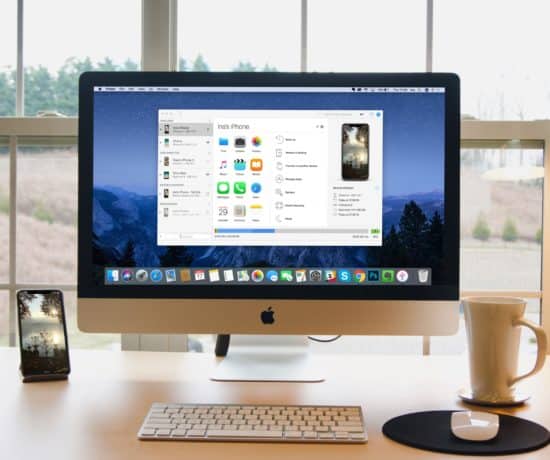“Simplicity is the ultimate sophistication,” said Leonardo Da Vinci once upon a time. Far be it for me to disagree. When one of the greatest polymaths in history gives advice, I choose to listen. As a Professional Organizer, I always look for ways to take these words and apply them to my own life, and I want to let them help inspire you as well. As it turns out, Da Vinci’s words have prompted a whole new blog series on how to organize natively, or “back to basics” as I like to call it. Native organizing doesn’t get the credit it deserves, but it’s a wonderful step in the right direction for beginners looking for the best practices of digital file storage. Let’s kick off the series by taking a look at what native organizing really means and why it’s so fantastic. So read on, my fellow systems analyst, and let’s see if we can simplify!
Do You Understand Your Photo Organizing System?
To quote Albert Einstein: “If you can’t explain it, you don’t understand it well enough.” Yes, another quote (can you tell I love quotes yet? Ha ha)! No, seriously. I want you to really think about this. If I asked you to explain your photo organizing system to me, could you? Do you understand it? Is it simple enough? These are some tough questions to ponder, but it’s really what lies at the core of your entire digital life. I’m mainly concerned with your photos, but in reality, it also applies to all of your other digital files as well. Do you know where your files go, how they get there, and why they go there? If you do, kudos (keep reading though…=)! If not, I invite you to re-evaluate your process. How can we improve it? According to Da Vinci, we do that by simplifying it, and according to Einstein, we do that by understanding it. How about if we put those two factors together?
How Do You Measure Success?
When I organize someone’s photo collection, my ultimate goal is to transfer knowledge, so that the clients understand what needs to happen going forward. After I have worked my magic, I tend to measure my success by gauging their responses to the following questions:
- Does they know where their photos are?
- Do they know how to back them up?
- Can they explain their photo organizing system in a sentence or two?
If all the answers to these questions are a resounding YES, then I’ve done my job well. If the answer is a “No” or an “I’m not sure…,” then we either dive deeper or simplify more.
I invite you to think about your own system and how to measure its success. Even though you may not be my client, I’d like you to be able to answer these questions for yourself because they’re telling of how you feel about the process, and how it’s working. As you may know from my recent guest post for Zapier on automated workflows, my own photo organizing system is a little more complex, yet beautifully streamlined. It works for me. The same system may not work for someone else. It all depends on your circumstances and where your photos originate. But no matter how your system is set up, I’m a firm believer that you need to understand it. So do you?
Let’s Keep It Simple!
I love simplicity. Obviously, most organizers do. And I’m a big believer that you don’t need to buy a bunch of expensive software to get your photos organized. Can you? Absolutely. You can spend all the money you want, but it doesn’t mean that your photos will be any more organized. Sometimes, keeping it simple is all you need. I tend to rely on the KISS principle a lot, which (if you’re not familiar with it) is an acronym for Keep It Simple, Stupid!” This is a design principle that has existed since the 1960s and that has helped me a lot when trying to figure out the best approach to organizing jobs. It’s the smack-in-the-head, pull-me-back-down-to-earth reminder that I need sometimes when I go down the rabbit hole of too much cross-referencing.
I like the KISS principle because it helps me teach better. Forbes columnist Amy Rees Anderson has written a wonderful article about how keeping things simple doesn’t mean you’re stupid in which she states that “the best proof of someone’s intelligence is their ability to simplify the complex.” I take that to heart because it really applies to teaching, and I want to be an amazing teacher. My clients don’t really care about how fancy my facial recognition software is – they just want to know where their photos are, and how to keep them safe. The simpler the system is, the easier it will be to understand, and the more useful it will be to them. You don’t need to have an automated, complex system for your photos. Nope. You don’t even need a software. =0 Intrigued yet?
Native Organizing = Back to Basics
Since I’m a photo organizer, I’m up to speed on most of the software that’s available to organize photos, but more often than not, I don’t recommend clients go that way if they’re beginners. In fact, in most cases, I tell them the opposite – start by consolidating their photos natively, using just their operating systems, and then upgrade when comfortable. Many clients appreciate this because many of them are not whiz kids on the computer, and since they’re already learning how to use their computers, why tack on yet another layer? They don’t want any more homework. Even those who are heavy computer users and well-versed in the industry vernacular still seek a simple way to keep their digital lives in order…The world of devices, connections, and the cloud is complex enough, don’t you think? So I like to bring it back to basics.
The truth is that you have most of the tools you need already built into your computer, no matter if you have a PC or a Mac. Between folders and tags, you already have what you need to keep things organized. How, you ask? Well, simply by having a basic folder structure, organized in one of the four main ways, and by putting your photos there after you snap them. This is what “native organizing” means – you’re organizing your files with the tools available in your native operating system, whether that is Windows 10, MacOS Sierra, or some other system. Boring? Maybe a little. Functional? Enough. Native organizing works as well as any other workflow, albeit with a few less bells and whistles. You can still sort, tag, and do all the other things you want to do with your photos, just in a more old-fashioned way.

I’m a Perfect Pinnable!
Metadata et al. = Secondary Future-Proofing
I hear you, photographers! What about metadata? you’re asking. And facial recognition? What about embedding the stories into the photos? As a photo organizer, shouldn’t I be advocating all of these things and more? To which my response is: YES! I do advocate that. Boy, do I! If you browse through this blog for more than a minute you can’t miss my passion for stories, so I think the proof is in the pudding. Ideally, I would love for everyone’s photos to be perfectly organized using all the techniques we have at our disposal, including facial recognition, controlled keyword vocabularies, and automation. However, I cannot ignore the reality that most photos aren’t even consolidated, and that has to take precedence. Keep in mind the demographics.
The Status Quo Simply isn’t Simple Enough
There is no question that metadata is the future (it’s already here for most of us), but most people don’t have the time to sit and keyword thousands of photos. That’s a problem. How to best do it is another discussion. But the biggest problem of all is that the stats are saying most people can’t even pinpoint a single location to look for their photos. In this stunning survey by our friends over at EverPresent, 83% of respondents “have not consolidated their photos & videos into a single library.” Ouch. The fact is that we can’t add the stories to the photos if we don’t actually have the photos. Apparently, unless you do what I do for a living, or hire a Photo Organizer, none of it is very likely to happen.
It’s an unfortunate status quo, but it’s a reality we have to tackle head on. Even those with organized photo collections may find a hole or two in their metadata strategy. This is something I hope will change with time, as software programs continue to improve and as they get simpler to use. I always recommend that you take your collection one step further by archiving the originals (if you have scanned photos), cross-labeling the originals, collecting the stories and adding metadata, and creating beautiful projects from those photos, but let’s not forget the root cause of why people aren’t doing all of this – it’s because they can’t find their photos. Most photo collections aren’t even close to being organized enough for those next steps, so getting the photos consolidated into one place has to be step one. Don’t you agree? In my opinion, native organizing is the best way to do this in a simple yet effective way.
Can I Still Use Some Tools in Native Organizing?
Of course! Just because your core file structure relies on your operating system doesn’t mean you can’t introduce handy dandy tools as you see fit. It’s more about stripping away the excess that isn’t working and revealing the parts that are working before adding on tools.
If and when you need them, batch renaming tools like NameChanger and A Better Finder Rename can be indispensable. When you’re working on your folders, tools like FolderMarker or Folder Colorizer can make all the difference. And once you get to an organized state and you’re ready to tackle your metadata, Photo Mechanic is a great software that is fairly intuitive to use because it has a similar navigation to your operating system. At a later point, you can make the decision to upgrade to something like Mylio or Lightroom. But I maintain that you don’t need all of those tools to start. And if you don’t understand exactly how your photo organizing workflow functions to begin with, you’ll just feel overwhelmed by getting into software too early on.
Where to Begin?
By now, I’ve probably convinced you that having a simple system is a good thing, right? So where do you begin?
Well, if you want the bells and whistles, this clearly isn’t for you. If you understand how to use a Lightroom plugin, this clearly isn’t for you. If you want syncing and facial recognition, this isn’t for you. But you’re probably not a beginner then either, am I right? You have my permission to go with the software that does everything and more – as long as you understand it. Because if you don’t understand it, you’ll end up doing more harm than good. See this article… or this one… If you’re more of an advanced computer user (or perhaps a pro photographer?), you probably already understand the process. In that case, how about you take a closer look at your workflow? How can you “KISS” it to simplify it? And how can you make it more user-friendly for yourself?
If you’re a beginner who doesn’t quite understand completely how your computer works, or how the photo organizing process is supposed to work, this blog post is for you. You’re the ideal candidate for native organizing. Basically, you’re searching for a simple system that works without you having to read a bunch of new tutorials. And if the thought of that possibility excites you, you should bookmark this blog series right now! If you’re an advanced user, then no, native organizing is obviously not for you.
Native organizing is about you understanding where exactly your photos live, why they live there, and how they are backed up. You can think about it as ‘best practices for basic file storage,’ but to me, it’s much more than that. It’s about the relief you’ll feel when you know where to look for your photos, and the joy you’ll feel when you truly understand the organizing process. It may sound simple, perhaps too simple, but guess what? That translates to “sophisticated.”
Want to Learn the Basics of Organizing?
Until the next blog post on this topic, check out my Organizing Formula mini-course, which is a free overview that explains the fundamentals more in detail. It’s totally free and just there for you to learn the basics before you get started with your project. I think you’ll come out of it understanding the organizing process better, and then you can move on to the actual implementation of your system.
Tell me, Readers: Do you understand your photo organizing system? Can you simplify it? Let me know in the comments below!





